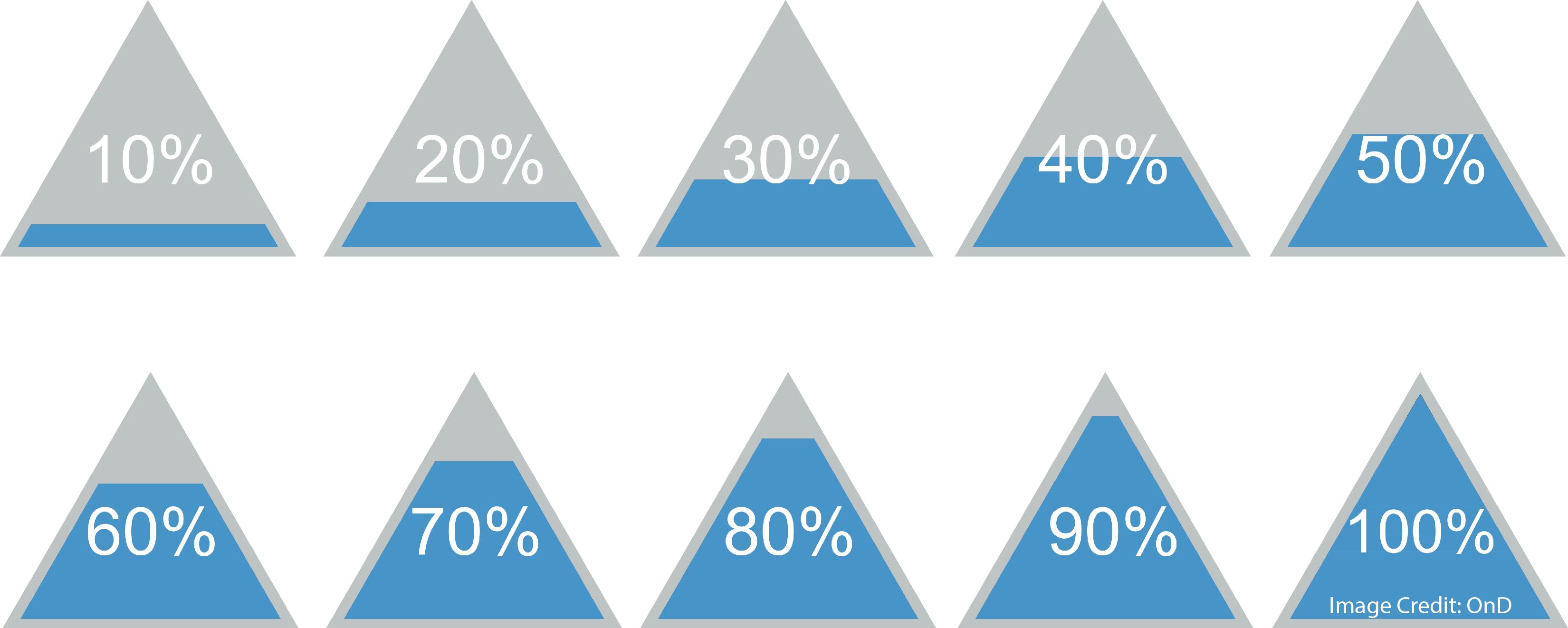
You have no doubt seen the tidy pyramid: students remember 5% of what they hear in a lecture, 10% of what they read, 20% of what they see, and so forth.
In crafting such a pyramid, its creators promote more active kinds of learning. The bottom of the pyramid, for example, might be “teaching others”: a highly active kind of learning that seems to generate all sorts of learning.
The Learning Pyramid Myth
The problem with the pyramid is not merely that it’s inaccurate, but that it’s incoherent. The Effortful Educator does a nice job of pointing out its obvious flaws, and of backing up his critique with specific sources.
As an easy introduction to that critique: any research producing numbers that are all divisible by 5 does seem rather suspicious…
(I first heard this critique from Charles Fadel at a Learning and the Brain conference in San Francisco 3 or 4 years ago. It just so happens that he’ll be speaking at the upcoming LatB conference–although on a different subject.)
The important lesson here goes beyond “always check the sources.” After all, if you look to see if this pyramid has been published elsewhere, you’ll find all sorts of examples.
Instead, the point is “always check the specific claims.” In this case, for example, you don’t need to see if someone has published a similar pyramid before; you need to see how the author supports the specific claim that students remember only 5% of what they hear in a lecture.
In fact, you should be most interested in research that focuses on students like yours.
Let’s imagine you found a study showing that students in a college art history class remembered 80% of what they heard in a lecture. That’s very interesting to college art history teachers–especially those who teach in the same way this particular professor does.
But, if you teach 5th graders, it doesn’t really help you very much.
Graphical representation of data can be inspiring: that’s one reason to be certain that the information in the graphic is correct.
[Addendum: 1/27/18] I’ve recently gotten some additional data on the “Learning Pyramid” from Charles Fadel. Enjoy!Fadel Multimodal Learning Through Media – What the research says
![AdobeStock_121864954 [Converted]_Credit](https://braindevs.net/blog//wp-content/uploads/2018/01/AdobeStock_121864954-Converted_Credit-1024x410.jpg)




